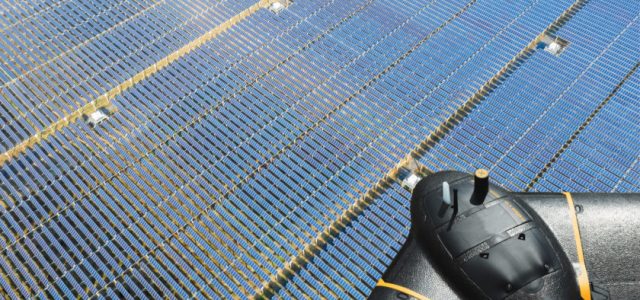senseFly, leading provider of fixed-wing drone solutions, introduced its new senseFly Solar 360 at this year’s AUVSI XPONENTIAL, the latest addition to its senseFly 360 solutions range. Created in collaboration with software company Raptor Maps, this new offering is a uniquely efficient thermal drone solution that enables the automatic assessment of solar plant performance at a sub-module level.
Created by combining eBee X fixed-wing drone technology, senseFly’s Duet T thermal mapping camera, and Raptor Maps’ ground-breaking software, senseFly Solar 360 is a fast and fully-automated solution. It is easily integrated into solar management workflows without requiring either drone piloting skills or the manual analysis of aerial solar farm data.
Penn State offers a new Graduate Certificate in Geospatial Programming and Web Map Development. Students will learn to script the automation of spatial analysis processes, develop custom user interfaces on top of existing desktop applications, and create web-based interactive mapping applications that support spatial data science. Classes are taught 100% online, which allows students the opportunity to earn a respected credential on a part-time basis while they continue to work.
“At senseFly we are continually looking across the industry to identify new commercial partners with whom we can bring to market what our customers need, which is vertically-focused end-to-end solutions,” said Gilles Labossière, CEO of senseFly. “With Raptor Maps, we are collaborating with a true solar industry pioneer. Their software takes the guesswork out of solar farm inspection and, crucially, speeds up this process – from days down to hours. This efficiency, combined with the eBee X’s large coverage and reliability, ensures that farm owners and operators — or the drone service providers they employ — can inspect utility-scale solar farms more quickly, easily, and accurately than ever before.”
“Solar power is the largest source of new energy generation in the world,” said Nikhil Vadhavkar, CEO of Raptor Maps. “This rapid growth has fueled demand for industry-specific solutions to allow solar customers to scale. Our enterprise-grade software has been deployed across six continents and 25 million solar panels to increase power production and reduce risk and maintenance cost across solar portfolios. We are proud to collaborate with senseFly, the industry leaders in commercial fixed-wing drones, to increase access to Raptor Maps while providing a comprehensive, end-to-end solution that scales with the solar industry.”
QUICK
Efficient solar farm inspection
- Users can inspect solar farm installations of up to 150 MW in a single day*, enhancing operational efficiency by up to 300 times versus ground inspection using a handheld thermographic sensor (500 kw per day)
- * Based on five 70-min eBee X flights at 42 m (138 ft) AGL.
- The senseFly eBee X drone can fly for up to 70 minutes when carrying the senseFly Duet T thermal/RGB mapping camera. This allows 65 ha (161 ac) of sub-module level anomalies to be documented in a single 42 m (138 ft) flight — double the inspection coverage of multi-rotor systems
- With Raptor Maps’ first-of-its-kind software’s minimal image requirements, users can conduct drone inspections at least five times faster than competing software
EASY
Receive the most accurate reports in the industry, automatically
- The eBee X drone makes collecting thermographic data of solar farms easier than ever before. It captures radiometric thermal and visual RGB imagery without the need for a trained pilot
- The Raptor Maps software then generates a detailed and actionable inspection report, using the eBee X’s RGB and thermal imagery to identify, classify, and localise anomalies automatically
- The eBee X thermal drone is an inherently safe, end-to-end integrated solution, thanks to its low kinetic energy, lightweight nature and range of configurable, aviation-inspired fail safes
PROFITABLE
Breakeven in just one flight
- Raptor Maps users report USD $2,000/MW of previously-undetected production impact and the ability to directly replace manual electrical testing. In the case of a 16 MW site this equates to breaking even on your senseFly Solar 360 investment after just one flight
- senseFly Solar 360 minimises staff time on-site and thus associated labour costs. It achieves this via the eBee X’s extensive single-flight coverage, which reduces the number of battery changes required, while Raptor Maps software helps to drive significant cost savings by requiring 80 per cent fewer images for its analysis than competing software
- The eBee X’s RGB camera data helps to deliver further cost benefits by generating a geo-accurate digital terrain model, which can be used to optimise a farm’s design
- This drone inspection solution also facilitates more frequent PV solar farm inspections, allowing problems at the string, module and cell level to be detected before they impact yield or cause a wider technical issue
senseFly Solar 360 is supplied with the customer’s choice of Data Pack. These Data Packs are available in 50 MW, 100 MW and 200 MW variants, depending on the output capacity a customer expects to assess over the course of a year.



















